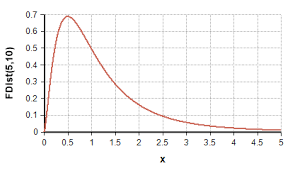Probability Distribution (2)

Below, in modern vector notation, in differential form, are Maxwell's four equations governing the electromagnetic field.
Below, in modern vector notation, in integral form, are Maxwell's four equations governing the electromagnetic field.
"There is an increasing demand of current information systems to incorporate the use of a higher degree of formalism in the development process. Formal Methods consist of a set of tools and techniques based on mathematical model and formal logic that are used to specify and verify requirements and designs for hardware and software systems."
"There is an increasing demand of current information systems to incorporate the use of a higher degree of formalism in the development process. Formal Methods consist of a set of tools and techniques based on mathematical model and formal logic that are used to specify and verify requirements and designs for hardware and software systems."
| CSS Section | Description/Purpose | Markdown Class (example) |
|---|---|---|
| section.title | Title slide | <!-- _class: title --> |
| section.title-bg | Title slide with background | <!-- _class: title-bg --> |
| section.chapter | Chapter slide | <!-- _class: chapter --> |
| section.chapter-alt | Alternative chapter | <!-- _class: chapter-alt --> |
| section.agenda | Agenda/content slide | <!-- _class: agenda --> |
| section.end | Thank you slide | <!-- _class: end --> |
| section.end-bg | Thank you with background | <!-- _class: end-bg --> |
| section.copyright | Copyright slide | <!-- _class: copyright --> |
| section.logos | Slide with additional logos | <!-- _class: logos --> |
| CSS Section | Description/Purpose | Markdown Class (example) |
|---|---|---|
| section.blank | Blank slide | <!-- _class: blank --> |
| section.nobrand | Slide without branding | <!-- _class: nobrand --> |
| section.multicolumn | Slide with multiple columns | <!-- _class: multicolumn --> |
| section.multicolumn vcenter | Vertically centered IN multiple columns | <!-- _class: multicolumn vcenter --> |
| section.grid-tlr | Grid: top, left, right | <!-- _class: grid-tlr --> |
| section.grid-lrb | Grid: left, right, bottom | <!-- _class: grid-lrb --> |
| section.quote | Quote slide (unified quote) | <!-- _class: quote --> |
| section.quote.dark | Alternative quote (formerly quote2) | <!-- _class: quote dark --> |
| section.references | References/bibliography slide | <!-- _class: references --> |
 Springer Verlag.
Springer Verlag. Ishtar Bäcklund Dakhil, Berlin: Verlag Urachhaus 2021.
Ishtar Bäcklund Dakhil, Berlin: Verlag Urachhaus 2021. Suhrkamp Verlag
Suhrkamp Verlag Oxford University Press.
Oxford University Press. nicoolay/DigitalVision Vectors/Getty Images.
nicoolay/DigitalVision Vectors/Getty Images. Suhrkamp Verlag
Suhrkamp Verlag Suhrkamp Verlag
Suhrkamp Verlag 2025.
2025. 2025 Wolfram.
2025 Wolfram.